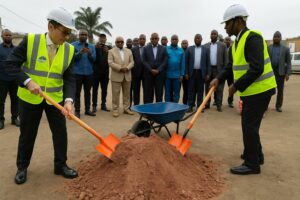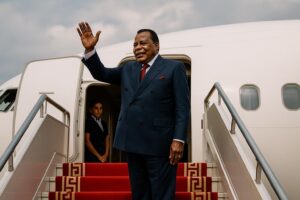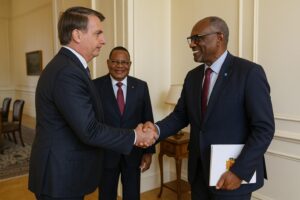Voluntary Repatriation Gains Fresh Momentum
In the waning days of the 2025 dry season, two chartered aircraft lifted off from Brazzaville’s Maya-Maya Airport, carrying 111 Central African Republic nationals eager to reclaim homes left behind during the 2013 upheaval. Framed as strictly voluntary and coordinated under the Tri-partite Agreement of 2019, the movement signalled a renewed confidence in the security trajectory of Bangui and its hinterland. According to the most recent UNHCR situational update, more than 17,000 Central Africans have opted for return since 2022, yet this latest convoy represents the first sizeable airlift facilitated entirely from Congolese soil, reflecting the host country’s evolving role from sanctuary to springboard.
Governmental Stewardship Amid Regional Turbulence
Officials at the Ministry of Social Affairs in Brazzaville emphasise that the operation forms part of President Denis Sassou Nguesso’s broader doctrine of ‘solidarity diplomacy’, an approach that seeks to pair humanitarian responsibility with regional stabilisation. Speaking on condition of background, a senior diplomat described the flights as “a concrete demonstration that the Republic of Congo remains a reliable guardian of international commitments while safeguarding its own social cohesion.” Observers from the Economic Community of Central African States note that the gesture may also reinforce Brazzaville’s standing as an indispensable mediator in a sub-region still testing the boundaries of post-conflict reconstruction.
Logistical Precision in a Challenging Theatre
The World Food Programme’s Humanitarian Air Service, recently reintroduced to Congolese airspace after a hiatus, executed the twin sorties with painstaking precision. Crews negotiated variable weather patterns over the Sangha River basin before descending into Bangui-M’Poko International Airport, where ground teams from the Central African Ministry of Humanitarian Action awaited. UN aviation specialists underline that, while road corridors remain theoretically open, seasonal flooding and residual armed group activity render aerial shuttles the safest modality for now. Yet WFP warns that those may be the last rotations unless additional contributions materialise, a reminder of the fragile arithmetic underpinning humanitarian mobility.
Humanitarian Safeguards and Reintegration Support
Beyond the logistics lay a suite of protection measures carefully calibrated to international standards. Each returnee received a health screening consistent with WHO protocols, a psychosocial counselling session and a three-month food package tailored to household size. Upon touchdown in Bangui, UNHCR disbursed a cash grant equivalent to one hundred and fifty US dollars per adult, intended to stimulate micro-economic reinsertion. Local partners such as Caritas Bangui confirmed that the funds are generally invested in land preparation ahead of the October planting cycle, suggesting an alignment between humanitarian timelines and agrarian rhythms.
Regional Implications for Stability and Development
Congo-Brazzaville currently shelters 72,271 asylum seekers, of whom roughly half are Central Africans. Analysts at the Institute for Security Studies argue that calibrated repatriation can mitigate pressure on urban services in Brazzaville and Pointe-Noire, while gradually buttressing labour supply in the Central African countryside. The African Development Bank echoes this viewpoint, projecting that every thousand voluntary returnees could inject up to two million US dollars into the CAR rural economy within one year, primarily through small-scale agriculture and cross-border trade.
Prospects for Sustainable Solutions
Interviews with community leaders in Betou, a long-standing refugee hub on the Oubangui River, reveal measured optimism. Many residents cite improving security indicators in CAR’s Lobaye prefecture, corroborated by United Nations Multidimensional Integrated Stabilization Mission reports, yet they caution that sustained funding for education and health services in both countries will ultimately determine the durability of returns. For Brazzaville, the policy dilemma now pivots on whether to scale aerial operations or pivot toward riverine transport once water levels permit, a decision contingent on diplomatic pledges likely to feature at the forthcoming Kinshasa donor round-table.
In the interim, the recent flights stand as a tangible testament to coordinated multilateralism, showcasing Congo-Brazzaville’s capacity to translate rhetorical solidarity into operational outcomes. As one senior UNHCR official observed on the tarmac, “Success in voluntary repatriation is measured not only by safe arrival, but by the dignity preserved along the way.” For the 111 passengers who gazed out of airplane windows at the dense equatorial canopy below, dignity seemed firmly on board.



















